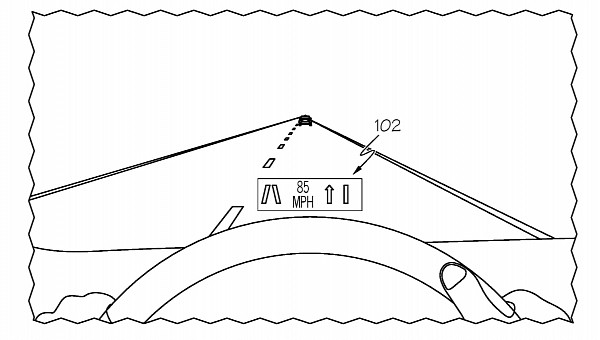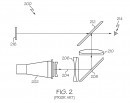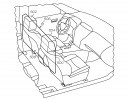Head-up displays have been around for a while, but carmakers and tech firms alike are already working on new-generation ideas that would further push this concept a step further.
Toyota is one of the companies that are likely to pioneer this push, as the Japanese firm has recently patented new technology that would allow rear-seat passengers to play games in the car using an augmented reality-powered HUD.
Called “AR content display for rear passengers using infrared light” and published on January 19, the patent describes a system that would comprise two different HUDs. The first of them would be projected in front of the driver and have the traditional role: to display information, including vehicle data and navigation guidance, in a way that would allow the person behind the wheel to always keep their eyes on the road.
At the same time, Toyota explains that rear-seat passengers would be provided with another infrared light-powered HUD that would display additional information, including data that would otherwise be considered distracting for the driver.
This means passengers can get access to all kinds of content, including AR-powered games that can be projected right in front of their eyes.
The patent describes how the whole system is supposed to work, explaining that the HUD content would be projected close to the headrest integrated into the front seats. Passengers would be allowed to configure everything they see, and presumably, they would also be able to control the projected information via connected devices.
In the case of games, for instance, passengers should be allowed to connect game controllers that would improve the overall experience and provide a more genuine gaming experience.
It’s not difficult to see how such technology would come in handy in the cabin and completely transform the infotainment experience, especially during long journeys. Head-up displays capable of providing access to interactive content would eliminate the need for more expensive hardware, such as displays that would have to be installed in the car.
But at the same time, this concept also raises additional challenges as far as the content offered to the passengers is concerned. The projected content would lack the high-quality graphics that would otherwise be available on a traditional screen, so while Toyota does say that passengers can play games, the options on this front are pretty limited.
AR-based games do make more sense, but on the other hand, the shortcomings are pretty obvious, especially given the limited space in the cabin.
This technology is still in the patent stage, so for the time being, we shouldn’t hold our breath waiting for Toyota to bring it to mass-produced cars. If anything, the company can further improve it with future updates and therefore make the whole thing more feasible before moving it a step closer to production vehicles.
Called “AR content display for rear passengers using infrared light” and published on January 19, the patent describes a system that would comprise two different HUDs. The first of them would be projected in front of the driver and have the traditional role: to display information, including vehicle data and navigation guidance, in a way that would allow the person behind the wheel to always keep their eyes on the road.
At the same time, Toyota explains that rear-seat passengers would be provided with another infrared light-powered HUD that would display additional information, including data that would otherwise be considered distracting for the driver.
This means passengers can get access to all kinds of content, including AR-powered games that can be projected right in front of their eyes.
The patent describes how the whole system is supposed to work, explaining that the HUD content would be projected close to the headrest integrated into the front seats. Passengers would be allowed to configure everything they see, and presumably, they would also be able to control the projected information via connected devices.
In the case of games, for instance, passengers should be allowed to connect game controllers that would improve the overall experience and provide a more genuine gaming experience.
It’s not difficult to see how such technology would come in handy in the cabin and completely transform the infotainment experience, especially during long journeys. Head-up displays capable of providing access to interactive content would eliminate the need for more expensive hardware, such as displays that would have to be installed in the car.
But at the same time, this concept also raises additional challenges as far as the content offered to the passengers is concerned. The projected content would lack the high-quality graphics that would otherwise be available on a traditional screen, so while Toyota does say that passengers can play games, the options on this front are pretty limited.
AR-based games do make more sense, but on the other hand, the shortcomings are pretty obvious, especially given the limited space in the cabin.
This technology is still in the patent stage, so for the time being, we shouldn’t hold our breath waiting for Toyota to bring it to mass-produced cars. If anything, the company can further improve it with future updates and therefore make the whole thing more feasible before moving it a step closer to production vehicles.






